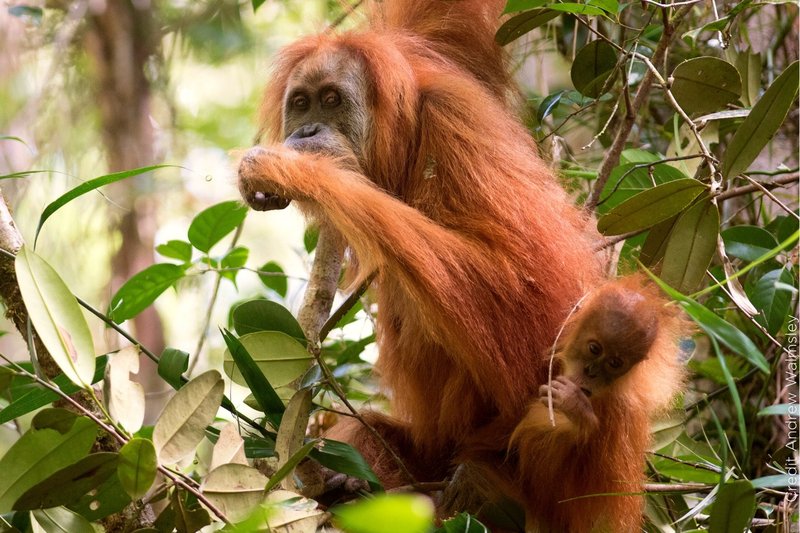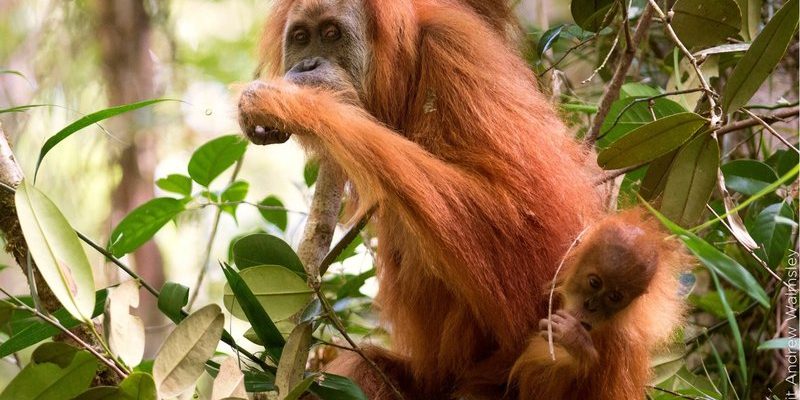
Honestly, the Tapanuli orangutan is a unique breed, found only in a small part of Sumatra, Indonesia. Imagine living in a remote corner of the world, surrounded by thick forests and the symphony of nature. These orangutans are not just any ordinary primate; they are distinct and critically endangered, making them all the more special. As we explore whether they can be dangerous, let’s dive into their behavior, habitat, and how they interact with humans.
Understanding the Tapanuli Orangutan
The Tapanuli orangutan (Pongo tapanuliensis) isn’t just rare; it’s a true marvel of evolution. Known for its long, shaggy hair and distinctive facial features, this species was only discovered in 2017, making it one of the newest members of the great ape family. They are often seen resting, foraging for fruits, and enjoying the lush greenery around them. These orangutans prefer to spend most of their time high in the trees, which is a natural defense against many predators.
In terms of size, they are similar to their Bornean and Sumatran relatives, but they have unique genetic traits that set them apart. With their large, expressive eyes and gentle demeanor, you might be tempted to think of them as cuddly teddy bears. However, understanding their behaviors is key to determining whether they could be dangerous to humans.
Natural Behavior and Temperament
Here’s the thing: orangutans, including the Tapanuli variety, are generally not aggressive. They are solitary creatures by nature, preferring to roam alone rather than in groups. This solitary lifestyle means they often seek to avoid confrontation. When threatened, they may display defensive behaviors instead of attacking—think of it like a dog barking rather than biting.
However, if they feel cornered or provoked, they can react unpredictably. Imagine being approached suddenly while enjoying your lunch; your first instinct might be to defend your territory, right? Similarly, if a Tapanuli orangutan feels threatened by a human’s presence, it might show aggression as a way to protect itself.
The Human-Orangutan Relationship
You might be wondering how interactions between humans and Tapanuli orangutans usually go. In their natural habitat, these orangutans don’t seek out human interaction. However, with deforestation and the encroachment of agricultural lands, encounters have become more common. Farmers or workers in these areas might find themselves face-to-face with these great apes, raising the potential for conflict.
In many cases, these interactions can lead to misunderstandings. Farmers might see orangutans as pests if they raid fruit orchards, while orangutans might view humans as threats. Education and awareness are crucial here. By understanding the orangutans’ behaviors and needs, humans can minimize conflicts and learn to coexist peacefully.
Can They Actually Be Dangerous?
While Tapanuli orangutans are generally peaceful, moments of danger can arise under specific circumstances. For instance, if a mother orangutan feels her baby is in danger, she may become very aggressive. This is a natural protective instinct, much like how a lioness defends her cubs.
Understanding these behaviors is important. Most incidents involving orangutans and humans happen when humans approach too closely or invade their space. It’s key to respect their territory, as you would when hiking through a wildlife area. Observing from a distance can prevent most dangerous encounters.
Comparing Tapanuli to Other Orangutan Species
It’s worth noting that all orangutans share similar behaviors and social structures. Bornean and Sumatran orangutans, like the Tapanuli, are also primarily solitary and usually avoid confrontations. However, the Tapanuli orangutan’s small population makes them particularly vulnerable. With fewer individuals, every encounter can have more significant consequences, both for them and for humans.
When comparing danger levels, here’s what sets Tapanuli apart:
- Population Size: With only around 800 left, their dwindling numbers intensify the urgency for conservation.
- Behavior: Their solitary nature may lead to more defensive reactions if they feel threatened.
- Habitat: Their limited distribution means they are more affected by human encroachment.
Despite these factors, most orangutans, including the Tapanuli variety, are not inherently dangerous. Understanding them can foster a better relationship with humans.
Coexistence Strategies and Conservation Efforts
So, what can we do to ensure a safe coexistence between humans and Tapanuli orangutans? One major strategy is education. Teaching local communities about the importance of these trees-dwelling giants can help foster a sense of respect and protection.
Conservation efforts play a crucial role too. Organizations are working to protect their habitats and create safe corridors for them to travel. By preserving the rainforest and its biodiversity, we help maintain the balance needed for both humans and orangutans to thrive.
Here are some effective strategies:
- Community Engagement: Involving locals in conservation efforts can create a sense of ownership and responsibility.
- Creating Awareness: Informational campaigns can teach people about the ecological value of orangutans.
- Buffer Zones: Establishing protected areas can reduce conflicts between humans and orangutans.
Final Thoughts: Understanding and Respecting Nature
At the end of the day, the Tapanuli orangutan isn’t really a danger to humans unless provoked. Much like any wild animal, their reactions depend on the situation. If we learn to respect their space and understand their behaviors, we can enjoy the wonders of nature without fear.
By fostering a positive relationship and taking substantial steps towards conservation, we protect not just the Tapanuli orangutan, but the vibrant ecosystems they inhabit. So next time you think of these amazing creatures, remember: they’re generally gentle, unique beings that deserve our admiration—not our fear.

